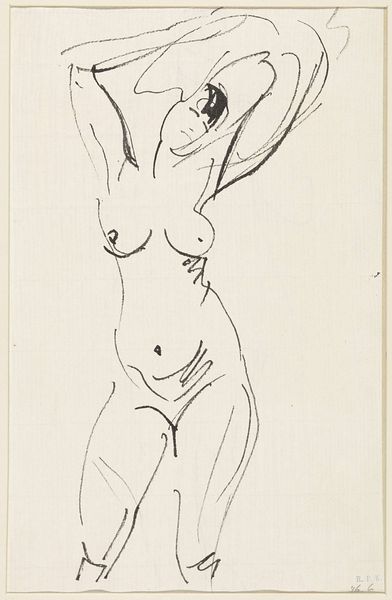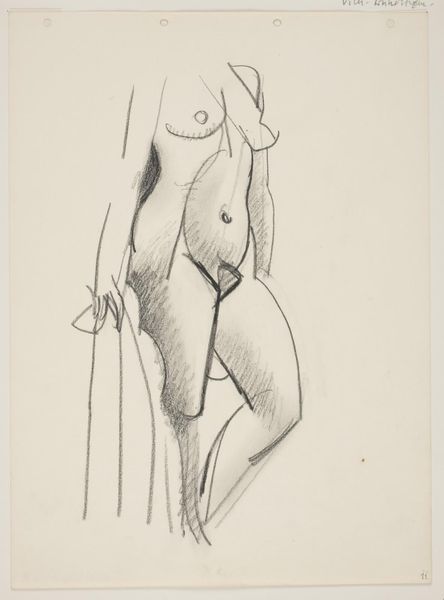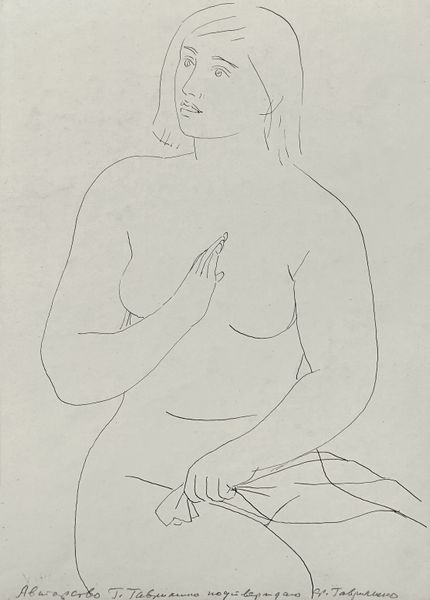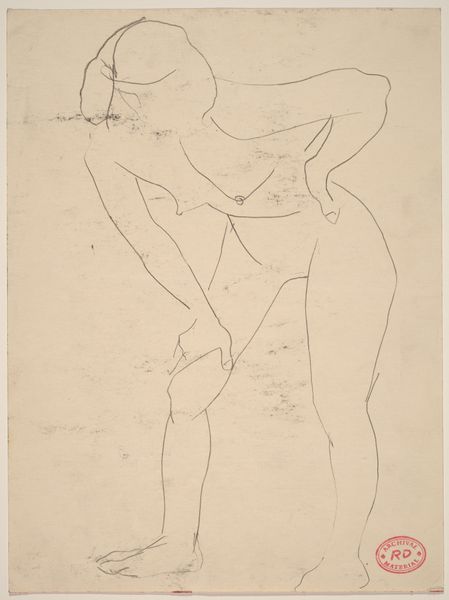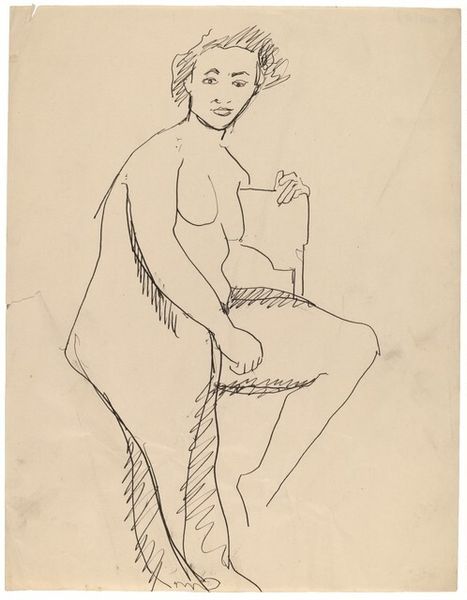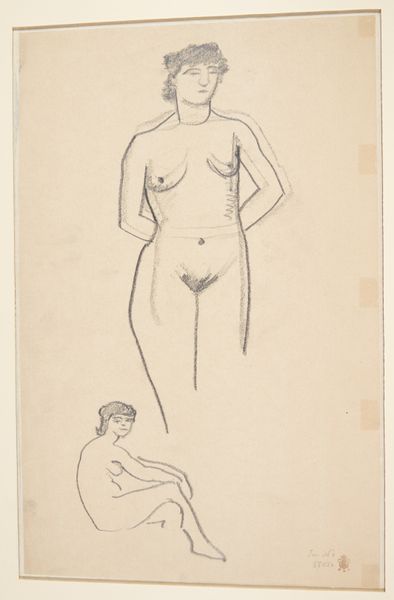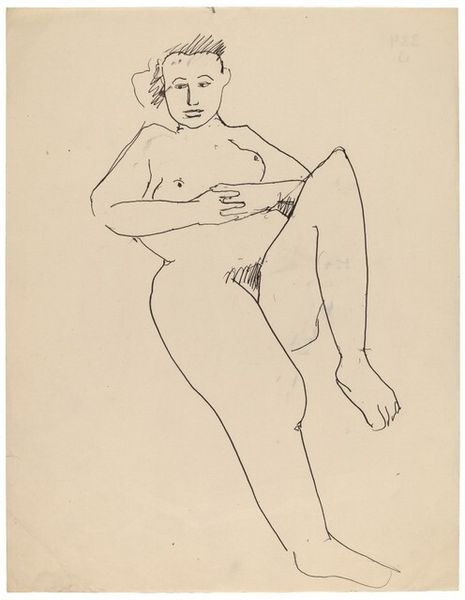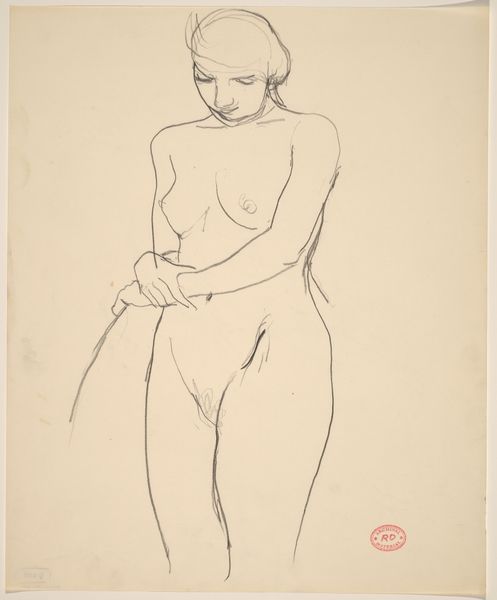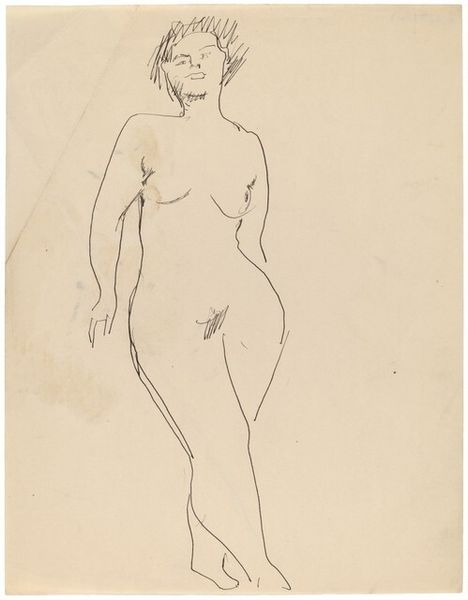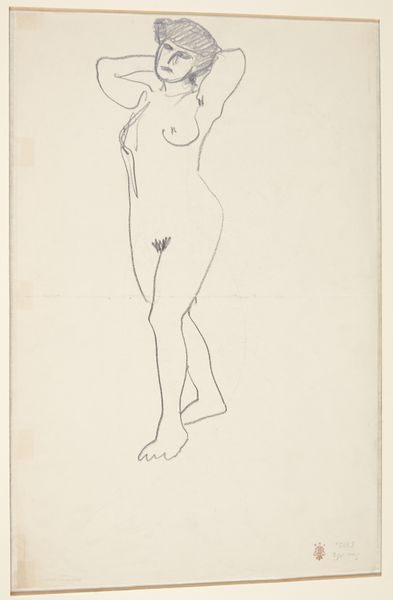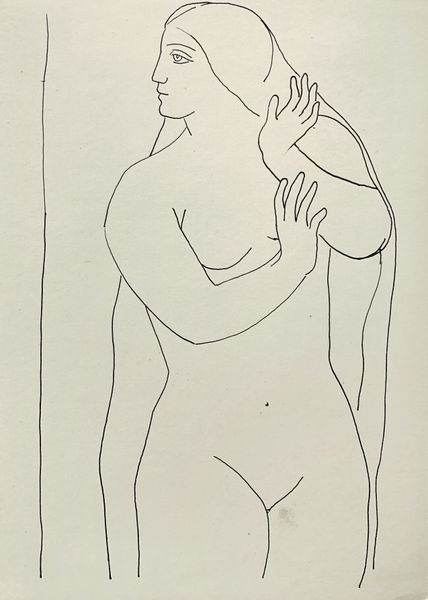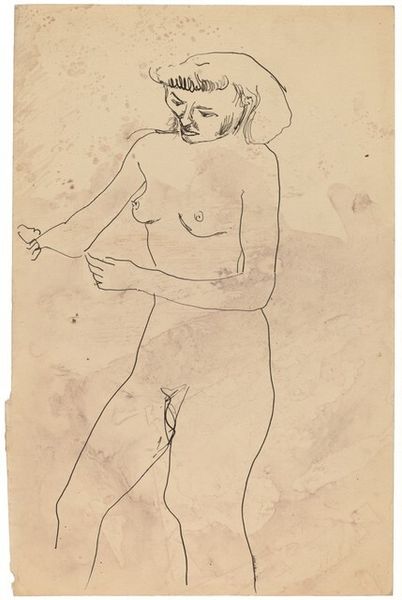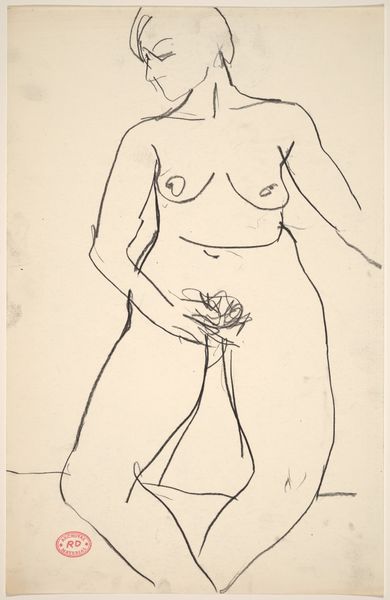
drawing, ink
#
drawing
#
landscape
#
figuration
#
ink
#
line
#
nude
#
modernism
Dimensions: height 251 mm, width 156 mm
Copyright: Rijks Museum: Open Domain
Editor: Here we have "Bathing Naked Woman by Moonlight," a 1939 ink drawing by Tinus van Doorn, held at the Rijksmuseum. The simple, almost naive lines give it a dreamlike quality. What strikes you about this work? Curator: What interests me immediately is the artist's deliberate choice of materials and technique, and how that connects to the social context. Look at the economy of line, the starkness of the ink on paper. This was made in 1939; think about the scarcity and the rationing that existed then. Could that influence the artwork? Editor: That’s a perspective I hadn’t considered. So, you’re suggesting that the simplicity might not be just an aesthetic choice, but also a reflection of the limited resources available? Curator: Precisely! How does this challenge the prevailing view that "high art" is intrinsically separate from the practicalities of daily existence or "craft" produced of necessity? What is deemed artistic and the labour in making it becomes linked to these social restraints. Editor: That’s really interesting. I always focused more on the emotional content of the art. Curator: Do you think it affects how we interpret the figure? Does the stark style affect how you relate to the body? How does a minimalist nude function in relation to traditional oil paintings? Editor: Good point! By stripping it down, the focus shifts to the woman’s form in a fundamental way, which has its own raw appeal in contrast to the paintings you mentioned. Also the simple lines have more expressive potential as the drawing takes on new emotional dimensions depending on the viewer’s experience. Curator: It suggests, perhaps, that Van Doorn intended a break from earlier representation models – less objectification, more essence. I wonder, in this period, whether Van Doorn consciously was making his own consumption visible and making his work “earthier”, or, closer to material consciousness in production? Editor: I never considered those things, I'm really thinking differently about this drawing now, thanks! Curator: Indeed! We need to continually investigate the artwork as a product of particular conditions, to better appreciate it!
Comments
No comments
Be the first to comment and join the conversation on the ultimate creative platform.
